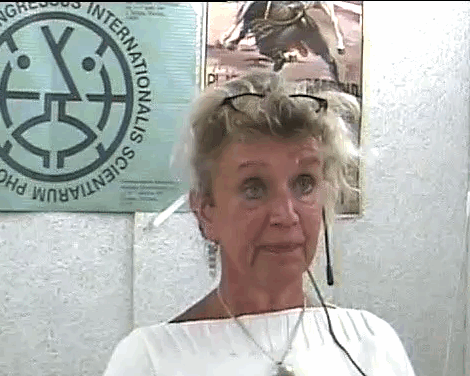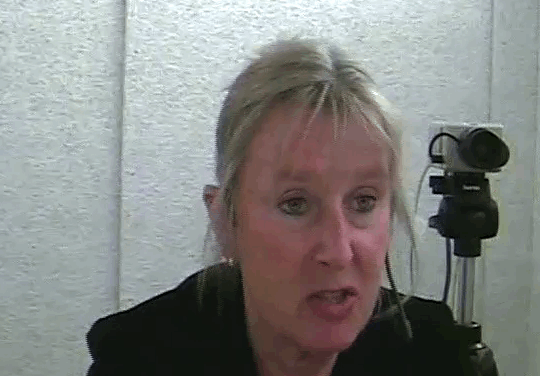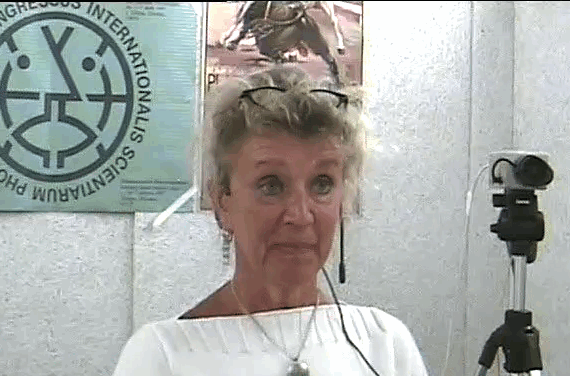BSTT/BLTT: The straightforward blink
Definition: Gaze both before and after the blink is directed towards the head of the conversational partner.
This is by far the most frequent kind of blink observed (though for any given subject, it might not be the most frequent kind. Subjects differ!). Clear examples are given below. The short form is far more frequent than the long form. When prolongation is present, this is often found to co-occur with head nods, or back channel feedback. If prolongation is pronounced, we need to distinguish between BLTT and an eye closing event (more than 10 frames of closure).
Examples
Example 1: BSTT (Blink Short Towards -Towards)
| Blink | Slow Motion | Comments |
|---|---|---|
 |
BSTT Note that the closure is more rapid than the opening phase. The blink should be annotated at the point at which the pupil is first substantially occluded. |
|
 |
BSTT Blinks may occur in rapid succession. A rate of about 5 blinks per second seems to be about the fastest possible. Anything faster could hardly be divided into individual blinks. Blink flurries are more common for blink type BSHA. See there for examples. |
Example 2: BLTT (Blink Long Hold Towards)
| Blink | Slow Motion | Comments |
|---|---|---|
 |
BLTT This blink lasts for 6 or 7 frames in total. It is accompanied by a head nod, which is entirely typical. |
